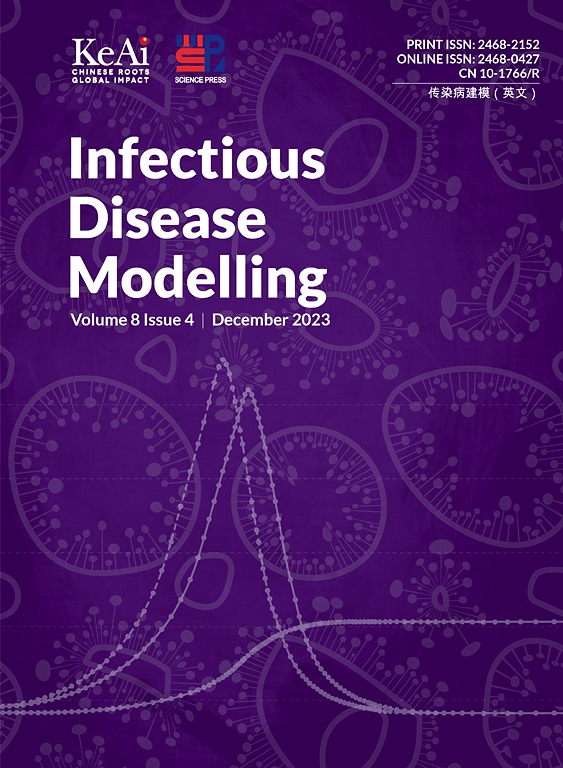二维流行病预测模型的建立
IF 2.5
3区 医学
Q1 Medicine
引用次数: 0
摘要
疫情预测是疾病控制决策的重要基础。由于当前流行病的人口关联性很强,因此必须掌握传染病的空间传播情况。然而,目前用于流行病预测的大多数模型是单点模型,它们只能捕捉有限区域内病例的时间动态增长。在本研究中,我们通过引入考虑空间传播流行病的扩散过程,建立了一个二维流行病预测模型。我们利用数学定理证明了模型的适定解。此外,我们还考虑了影响流行病传播的各种因素,并引入了多种参数化方案。结果表明,该二维模型能较准确地预测确诊病例的时空分布。兰州2022年7月2019冠状病毒病区域平均预测得分为76.5%,中国2023年5月1日至5月31日2019冠状病毒病区域平均预测得分为70.7%。研究结果为进一步开展空间流行预测研究提供了科学依据,有助于深入了解流行动态,为制定公共卫生战略和政策提供有价值的参考。本文章由计算机程序翻译,如有差异,请以英文原文为准。
Development of two-dimension epidemic prediction model
Epidemic prediction is a crucial foundation of disease control policy-making. Owing to the high population connectivity of current epidemics, it is essential to capture the spatial transmission of infectious diseases. However, most models currently used in epidemic prediction are single-point models, and they can only capture the time-dynamic increase of cases in limited areas. In this study, we develop a two-dimension epidemic prediction model by introducing diffusion processes, which take spatial transmission epidemics into account. We utilize mathematical theorems to prove a well-posed solution of the model. In addition, we also consider various influencing factors that affect the spread of epidemics, and introduce multiple parameterization schemes. Results suggest that this two-dimension model provides more precise predict the spatial and temporal distribution of confirmed cases. The regional average prediction score of COVID-19 in July 2022 in Lanzhou is 76.5 % and COVID-19 from May 1st to May 31st, 2023 in China is 70.7 %,respectively. Our results offer a scientific foundation for further study on the prediction of spatial epidemics, which contributes to an in-depth understanding of epidemic dynamics and provides valuable reference for the formulation of public health strategies and policies.
求助全文
通过发布文献求助,成功后即可免费获取论文全文。
去求助
来源期刊

Infectious Disease Modelling
Mathematics-Applied Mathematics
CiteScore
17.00
自引率
3.40%
发文量
73
审稿时长
17 weeks
期刊介绍:
Infectious Disease Modelling is an open access journal that undergoes peer-review. Its main objective is to facilitate research that combines mathematical modelling, retrieval and analysis of infection disease data, and public health decision support. The journal actively encourages original research that improves this interface, as well as review articles that highlight innovative methodologies relevant to data collection, informatics, and policy making in the field of public health.
 求助内容:
求助内容: 应助结果提醒方式:
应助结果提醒方式:


